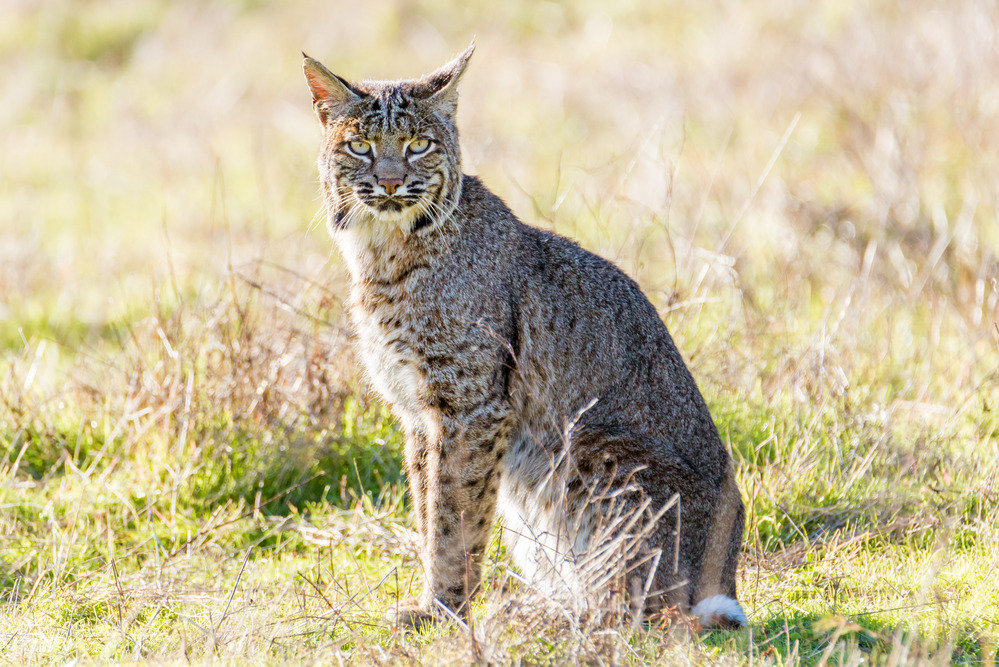

The male Bobcat has several females in his territory and it happens so that he feeds all females with cubs the first time and also joins them when the cubs first learn to hunt. The Bobcat breeds from winter into spring and has a gestation period of about two months. It uses several methods to mark its territorial boundaries, including claw marks and deposits of urine or feces. Like most cats, the bobcat is territorial and most of the time solitary, although there is some overlap in home ranges. Prey selection depends on location and habitat, season, and abundance. The Bobcat hunt anything from insects and small rodents, rabbits and hares, to deer. They are adaptable predators inhabiting wooded areas as well as semi-desert, urban edge, forest edges and swampland environment. Although Bobcats have been hunted extensively by humans, both for sport and fur, their population has proven resilient. With twelve recognized subspecies the North American member of the cat family, Felidae, ranges from Southern Canada to Northern Mexico, including most of the continental United States. It is an excellent climber, and will swim when it needs to, but will normally avoid water. The cat has sharp hearing and vision, and a good sense of smell. The pupils are round black circles and will widen during nocturnal activity to maximize light reception. Bobcat eyes are yellow with black pupils. The nose of the Bobcat is pinkish-red, and it has a base color of gray or yellowish- or brownish-red on its face, sides, and back. The fur is brittle but quite long and dense. The face appears wide due to ruffs of extended hair beneath the ears. They appear black, but may actually still exhibit a spot pattern.

A few melanistic Bobcats have been sighted and captured in Florida. Kittens are born well-furred and already have their spots. Bobcats in the desert regions of the southwest have the lightest colored coats, while those in the northern, forested regions are darkest. There is generally an off-white color on the lips, chin, and underparts. The ears are black-tipped and pointed, with short black tufts. Its spotted patterning acts as camouflage. Its coat is variable, though generally tan to grey and reddish brown (that’s why it is also called Red Lynx), with black streaks on the body and dark bars on the forelegs and tail. It is believed to have evolved from the Eurasian lynx, which crossed into North America. The Bobcat resembles other species of the Lynx genus but is on average the smallest of the four. It is about twice as large as the domestic cat and it derives its name from the black-tipped stubby tail. The Bobcat, or red lynx, (Lynx rufus) with his grey to brown coat, whiskered face and black-tufted ears resembles the other species of the mid-sized Lynx genus, though it is smaller than the Canada Lynx, with which it shares parts of its range.


 0 kommentar(er)
0 kommentar(er)
